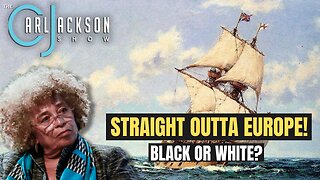The Wild Attempt by Scotland To Colonize Panama and the Birth of the UK
When you think of Scotland, various things come to mind, yet colonial power is usually not one of them. Yet think again. In the late 17th century, Scotland tried to colonize part of the Americas. They must have been drunk.
To be more specific, Scotland tried to establish a colony called New Caledonia on the Isthmus of Panama, known as the Darien Scheme. The colony was built in the northeast of modern Panama, in the territory of the Guna Yala today, an indigenous territory home to the Guna people. Today in this region there is still a bay called the Bay of Caledonia, with Caledonia being Scotland in Latin. The idea was to establish an overland route that would connect the Atlantic and Pacific Oceans, allowing traders to use the New Caledonian services to move their goods over land and across to the Pacific side of Panama. This would save ships having to take the perilous journey (especially in the 17th century) around the bottom arc of South America.
This service was intended to serve a similar function to the later Panama Canal, which wasn’t built until 1914. With the volume of trade during that period of time, a successful implementation of the Darien Scheme would have made those involved a fortune.
The intellectual architect of this plan was William Paterson, a fascinating character himself. His most famous claim to fame was one of founders of the Bank of England, an interesting fact for a man born in Dumfriesshire. At 17 however, Paterson moved to the Bahamas, and during this time in the West Indies, he was initially struck by the idea of the Darien Scheme.
After returning to London in the 1680s, he made a fortune from the slave trade in the West Indies and also started a company supplying water to London. Also during this spell in London, Paterson had met a sailor called Lionel Wafer, who had told him about a wonderful paradise on the Isthmus of Panama, with a sheltered bay, friendly Indians and rich, fertile land - a place called Darien.
The idea took hold in Scotland, and there was a rush to invest in the Company of Scotland Trading to Africa and the Indies, founded in 1695 to fund this venture. This scheme immediately had its enemies however. Both the Spanish and the English East India Company felt threatened by it. The East India Company managed to lobby the English Parliament to the extent that English investors were forced to withdraw, lobbying isn’t just a modern phenomenon after all.
-
 2:03
2:03
SWNS
6 years agoFirst polar bear cub born in Britain
932 -
 1:20:50
1:20:50
Avoiding Babylon
1 year agoIs Ireland still the Land of St Patrick? Or is it mission territory now? w/ Robert Nugent
556 -
 2:28
2:28
CGP Grey Archive Channel
1 year agoHow Scotland Joined Great Britain
10 -
 37:43
37:43
The Carl Jackson Show
1 year agoSTRAIGHT OUTTA EUROPE! Angela Davis, Discovers Her White Ancestor Was A Pilgrim On The Mayflower
140 -
 8:32
8:32
GrahamtheBaronHesketh
1 year agoScottish Independence.
4 -
 10:30
10:30
Archive of The History Guy: History Deserves to Be Remembered
1 year agoThe 1960 Invasion of Great Swan Island
23 -
 9:05
9:05
comic,comedy,funny moment ,funny video
3 years agoscotland mother of nature
149 -
 14:22
14:22
16mm Educational Films
4 months ago $0.02 earnedAge of Discovery: Spanish, Portuguese, British, French and Dutch Explorers
342 -
 0:30
0:30
SWNS
5 years agoBritain's second ever zonkey born on Somerset farm - cross between a zebra and a donkey.
599 -
 1:59
1:59
Big Belly & Son Trucking
10 months agoTHE 13 ORIGINAL COLONIES
5